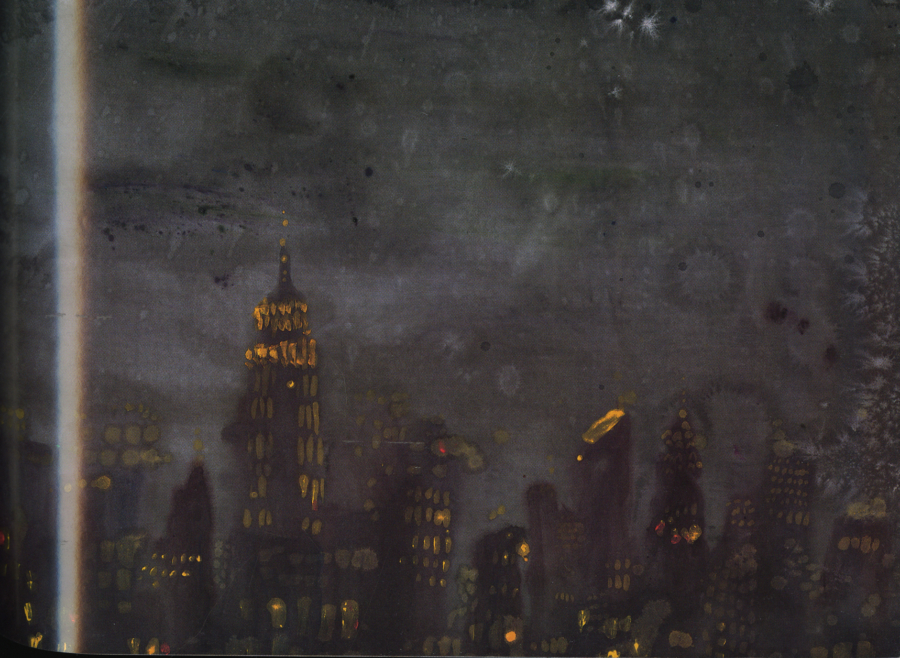December 1993

Tabboo!/Stephen Tashjian, I Happen to Like New York, 1993, acrylic on paper, 22 × 30”
“Is this a bed or a cloud?” sighed John. “Percy, Percy-before you go, I want to apologize.”
“For what?”
“For doubting you when you said you had a diamond as big as the Ritz-Carlton Hotel.” Percy smiled.
“I thought you didn’t believe me. It’s that mountain you know.”
“What mountain?”
“The mountain the château rests on. It’s not very big for a mountain. But except about fifty feet of sod and gravel on top it’s solid diamond. One diamond, one cubic mile without a flaw.”
—F. Scott Fitzgerald, The Diamond as Big as the Ritz, 1922
We may no longer understand how to look at Stephen Tashjian’s paintings. We are so accustomed to complicated forms of pleasure, having to dig for the bone, that simplicity may throw us off. In a time when one asks art to mean so much, some may be unable to form a connection with works that offer up no complex agendas or sleight-of-hand.
The paintings are simply unafraid. Popsicle sunsets are watery, sticky, and sweet, want to crawl inside your sugar walls, as Sheena Easton sings. The city of Stephen Tashjian is a Nijinsky ballet, a Schiaparelli gown, a Delmore Schwartz story. It is a world crammed with mythology: these Manhattan skylines are other Gothams, glorious fakes that almost, but don’t quite, resemble the real thing.
At night, Tashjian, who also goes by the name Tabboo!, performs in drag. The ways in which he transforms his city into a realm of mystical and artificial beauty is akin to the process of remaking himself: the masculinity of the city, its hard lines, rough exteriors, and daunting size, is made smaller and less caustic. Day, mid morning, or night. Muggy before a thunderstorm or bright and electric. He paints his city on top of skies that come from deserts or hang above oceans like scrims from Broadway shows. Tashjian’s is a delicate camp, fragrant and fabulous and very con tained. The fragility of his image, the abandon to prettiness, lends his work poignancy. He dares to be beautiful, both in his works on paper and on the stage, and the vulnerability this implies is what makes them so touch ing, so desirable.
As decorative and flirtatious as the paint ing might first appear to be, one senses an undercurrent of desolation. Windows are blurred over and often only the tops of the buildings are visible. The paintings detail a city with no base, one that floats in the air. The clamor of the urban cliché is absent; the landscape is painfully mute. Tashjian’s water colors become memorials to a city within a city, which is slowly disappearing. The only movement is in the lavender and pink and lime and orange swirls and drips that blanket this place. Tashjian’s lush back grounds are apocalyptic flashes—a lavish bid to combat sadness.



